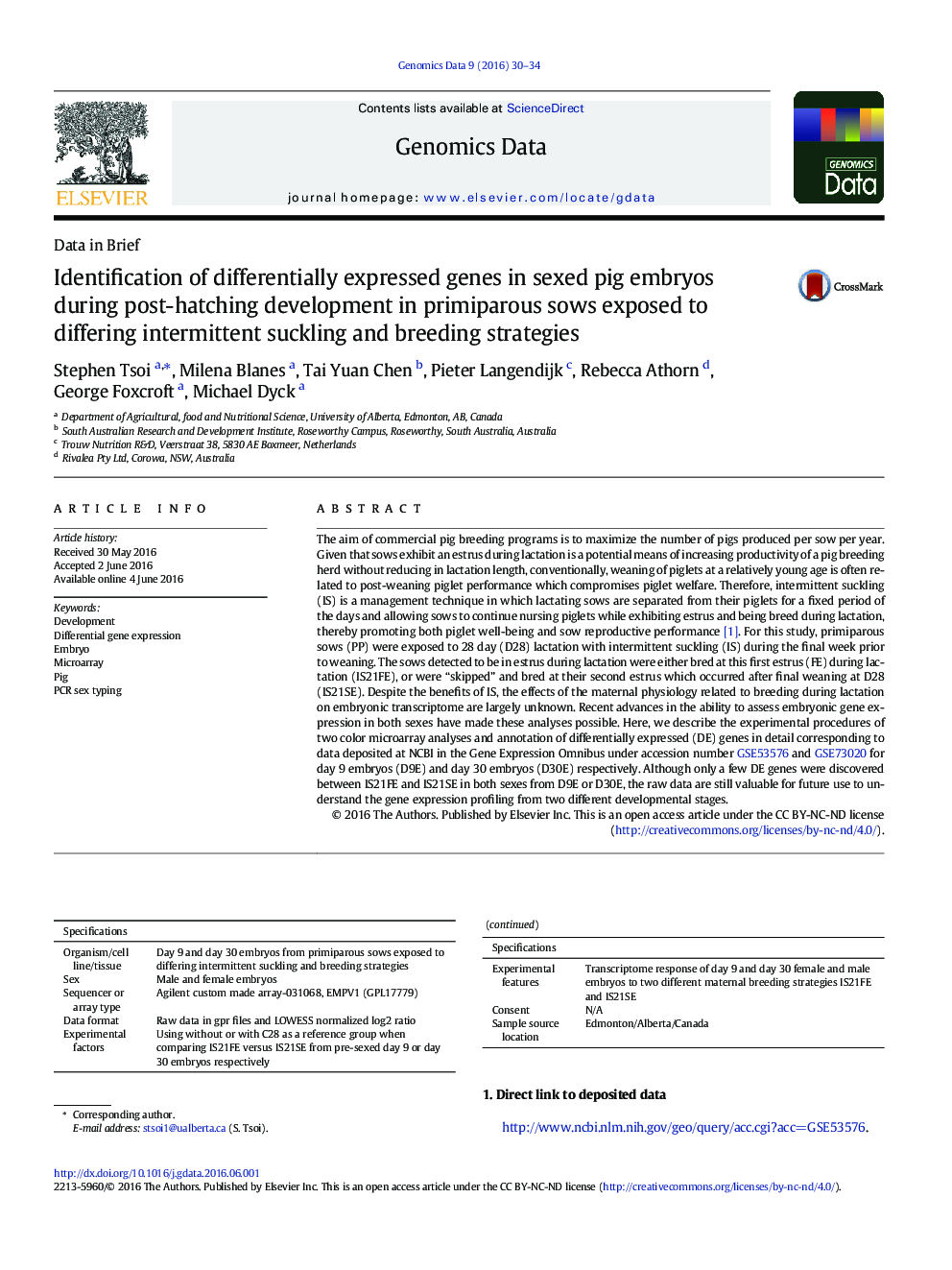| کد مقاله | کد نشریه | سال انتشار | مقاله انگلیسی | نسخه تمام متن |
|---|---|---|---|---|
| 2821956 | 1570117 | 2016 | 5 صفحه PDF | دانلود رایگان |
The aim of commercial pig breeding programs is to maximize the number of pigs produced per sow per year. Given that sows exhibit an estrus during lactation is a potential means of increasing productivity of a pig breeding herd without reducing in lactation length, conventionally, weaning of piglets at a relatively young age is often related to post-weaning piglet performance which compromises piglet welfare. Therefore, intermittent suckling (IS) is a management technique in which lactating sows are separated from their piglets for a fixed period of the days and allowing sows to continue nursing piglets while exhibiting estrus and being breed during lactation, thereby promoting both piglet well-being and sow reproductive performance [1]. For this study, primiparous sows (PP) were exposed to 28 day (D28) lactation with intermittent suckling (IS) during the final week prior to weaning. The sows detected to be in estrus during lactation were either bred at this first estrus (FE) during lactation (IS21FE), or were “skipped” and bred at their second estrus which occurred after final weaning at D28 (IS21SE). Despite the benefits of IS, the effects of the maternal physiology related to breeding during lactation on embryonic transcriptome are largely unknown. Recent advances in the ability to assess embryonic gene expression in both sexes have made these analyses possible. Here, we describe the experimental procedures of two color microarray analyses and annotation of differentially expressed (DE) genes in detail corresponding to data deposited at NCBI in the Gene Expression Omnibus under accession number GSE53576 and GSE73020 for day 9 embryos (D9E) and day 30 embryos (D30E) respectively. Although only a few DE genes were discovered between IS21FE and IS21SE in both sexes from D9E or D30E, the raw data are still valuable for future use to understand the gene expression profiling from two different developmental stages.
Journal: Genomics Data - Volume 9, September 2016, Pages 30–34
